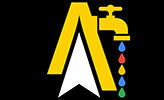GoogleApi.ContentWarehouse.V1.Model.AssistantLogsAmbiguousTargetDeviceLog
Table of Contents ▼
Jump to a specific part of the page:
Description
This message logs details on ambiguous device targeting logic. 1. It first takes a list of ambiguous devices 2. Then applies two filters: structure filter and playability filter. 3. If more than one device remains, it tiggers DeviceSelectionDialog to let the user pick one device.
Attributes List
This module has the following attributes (case-insensitive ascending order):
Attributes
-
ambiguousDeviceIndex(type:list(integer()), default:nil)
- Device index of the initial ambiguous devices. The device index in this message is consistent with the device index in DeviceInfoLog. It would be used to track more detailed information of a device if needed. -
devicesAfterPromoters(type:list(GoogleApi.ContentWarehouse.V1.Model.AssistantLogsDeviceInfoLog), default:nil)
- DeviceInfo for devices after the filters and promoters. - When device targeting is only configured for single target, these are ambiguous devices that would have been the output of Lumos. Downstream may perform extra check before disambiguation dialog. For example, Media Initiation checks playability for devices. The output here is before the check. - When configured for multi-target, these are just the target devices. For privacy consideration, we may only log device id field inside. -
finalTargetDevice(type:GoogleApi.ContentWarehouse.V1.Model.AssistantLogsDeviceInfoLog, default:nil)
- the final targeted device selected by playability filter or DeviceSelectionDialog -
playabilityFilteredDevicesIndex(type:list(integer()), default:nil)
- Device index of the devices after playability filter -
puntInfoLog(type:list(GoogleApi.ContentWarehouse.V1.Model.AssistantLogsAmbiguousTargetDeviceLogPuntInfoLog), default:nil)
- When there is no qualified devices after playability check, it would populate punt_info below. If all devices are filtered out for the same reason, there would only be one item. Otherwise, there will be multiple items. -
structureFilteredDeviceIndex(type:list(integer()), default:nil)
- Device index of the devices after structure filter
Type
@type t() :: %GoogleApi.ContentWarehouse.V1.Model.AssistantLogsAmbiguousTargetDeviceLog{
ambiguousDeviceIndex: [integer()] | nil,
devicesAfterPromoters: [GoogleApi.ContentWarehouse.V1.Model.AssistantLogsDeviceInfoLog.t()] | nil,
finalTargetDevice: GoogleApi.ContentWarehouse.V1.Model.AssistantLogsDeviceInfoLog.t() | nil,
playabilityFilteredDevicesIndex: [integer()] | nil,
puntInfoLog: [ GoogleApi.ContentWarehouse.V1.Model.AssistantLogsAmbiguousTargetDeviceLogPuntInfoLog.t() ] | nil,
structureFilteredDeviceIndex: [integer()] | nil
}
ambiguousDeviceIndex: [integer()] | nil,
devicesAfterPromoters: [GoogleApi.ContentWarehouse.V1.Model.AssistantLogsDeviceInfoLog.t()] | nil,
finalTargetDevice: GoogleApi.ContentWarehouse.V1.Model.AssistantLogsDeviceInfoLog.t() | nil,
playabilityFilteredDevicesIndex: [integer()] | nil,
puntInfoLog: [ GoogleApi.ContentWarehouse.V1.Model.AssistantLogsAmbiguousTargetDeviceLogPuntInfoLog.t() ] | nil,
structureFilteredDeviceIndex: [integer()] | nil
}
Function
@spec decode(struct(), keyword()) :: struct()Data sourced from HexDocs : GoogleApi.ContentWarehouse.V1.Model.AssistantLogsAmbiguousTargetDeviceLog
